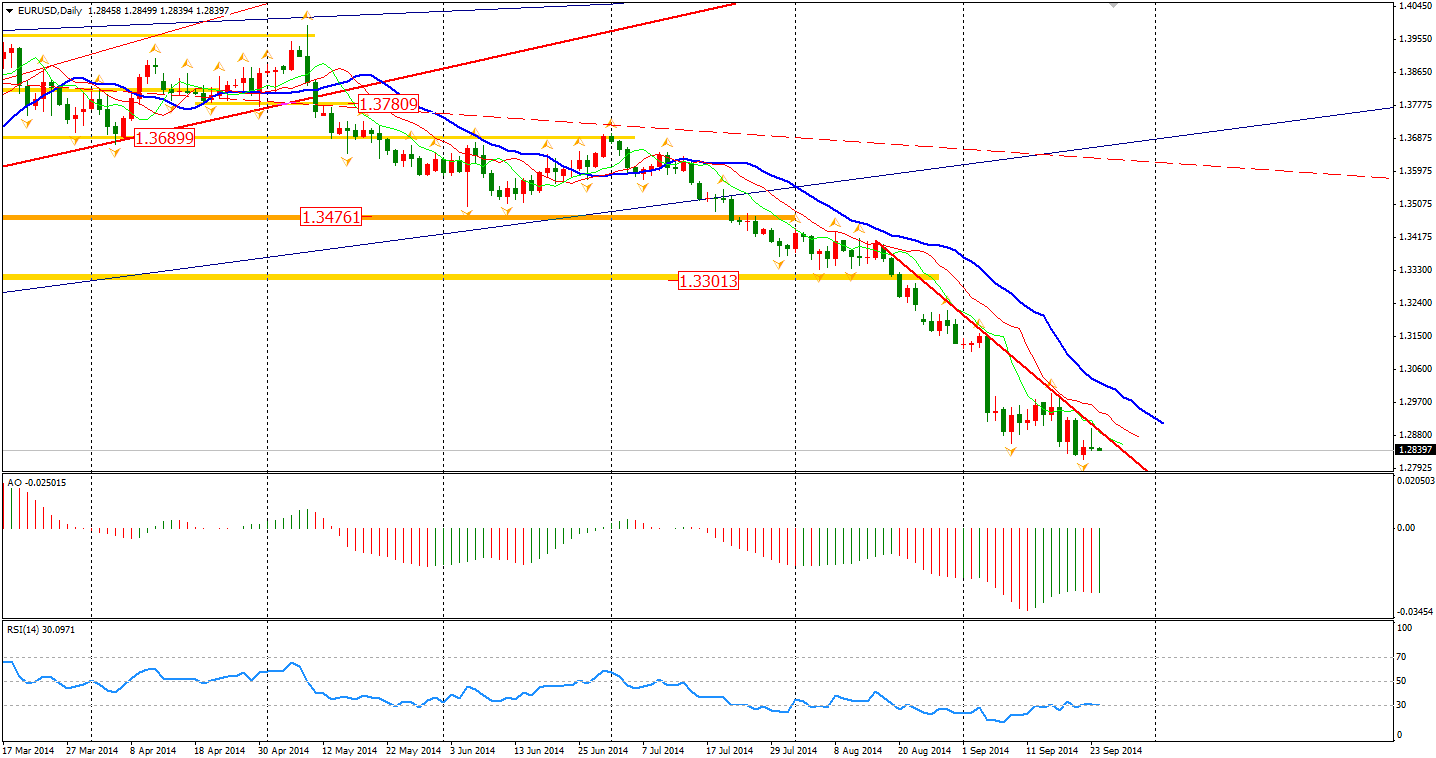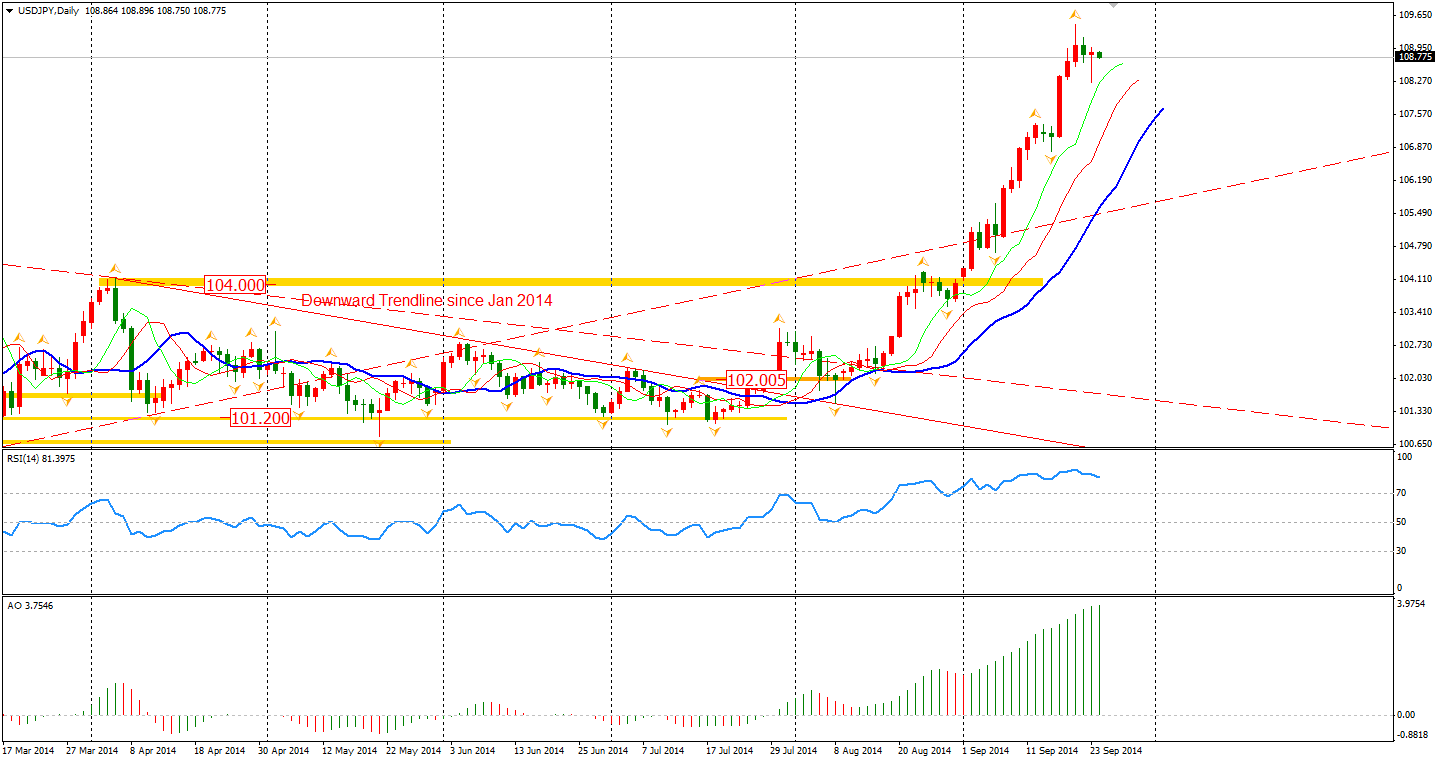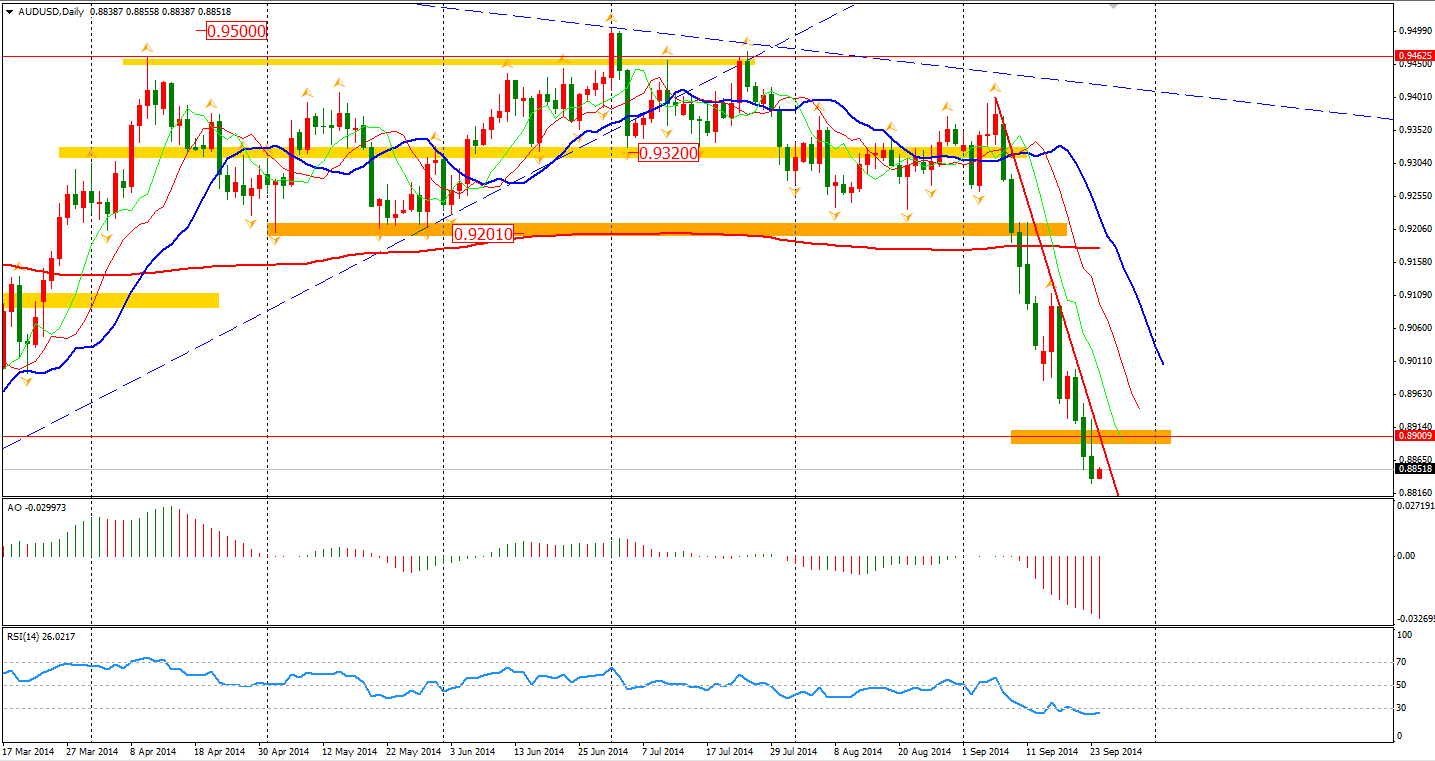The Eurozone PMIs were generally in line with expectations, boosting the Euro to 1.29 against Dollar. The rebound however did not last that long with the composite PMI announcing a fall to 52.9 – the lowest level this year. The growths of outputs and demands were weak with enterprises continually cutting prices to attract consumers. The result has magnified the concerns of deflation risk in the Eurozone. The bearish trend remains unless the Euro upward breaks yesterday’s high.
The Yen also took this chance to bounce. Dollar Yen once dipped to a four-day low, below 108.30. This can be viewed as partially being a knee-jerk reaction to US airstrikes on Syria boosting the need for safe-havens. The implied skewness from the option market shows that traders are now expecting a deeper retreat of this pair. The possibility is increasing as there has been no significant retreat yet since the Dollar Yen broke the 104 integer level.
The Aussie Dollar climbed to an area around 0.8922 after the upbeat China HSBC Flash Manufacturing PMI was released. However, the pair barely remained at this level with a typical hourly double top pattern and again refreshed the recent low to 0.8840. Economists expect the reasonable level for the Aussie Dollar to be 0.85, considering the lower commodity prices. However, there still is a risk that funds may support the pair beyond this level as the interest rate spread between Australia and Eurozone is further widened.
Asian stocks rose from a four-month low as the preliminary gauge of Chinese manufacturing unexpectedly rose. The Shanghai Composite rebounded 0.87% to 2310. The Nikkei Stock Average fell 0.71%. The Australian ASX 200 bounced 0.98% to 5416. European stock markets fell on a weak report on Europe’s economy, the UK FTSE was down 1.44%, the German DAX lost 1.58% and the French CAC Index slumped 1.87%. U.S. stocks retreated as well. The S&P 500 fell 0.58% to 1983. The Dow edged down 0.68% to 17056, while the Nasdaq Composite Index dipped 0.42 % to 4509.
On the data front, German Ifo Business Climate will be released at 18:00 AEST. U.S. New Home Sales will be at midnight.
Recommended Content
Editors’ Picks
EUR/USD holds above 1.0700 on weaker US Dollar, upbeat Eurozone PMI

EUR/USD holds above the 1.0700 psychological barrier during the Asian session on Wednesday. The weaker-than-expected US PMI data for April drags the Greenback lower and creates a tailwind for the pair.
GBP/USD posts modest gains above 1.2450, BoE policymaker dampens hopes of summer rates cut

The GBP/USD pair recovers to 1.2450 during the early Wednesday. The downbeat US April PMI data and increasing appetite for the risk-linked space exert some selling pressure on the US Dollar. Later in the day, the US Durable Goods Orders and weekly Mortgage Applications will be released.
Gold price struggles to lure buyers amid positive risk tone, reduced Fed rate cut bets

Gold price lacks follow-through buying and is influenced by a combination of diverging forces. Easing geopolitical tensions continue to undermine demand for the safe-haven precious metal. Tuesday’s dismal US PMIs weigh on the USD and lend support ahead of the key US macro data.
Crypto community reacts as BRICS considers launching stablecoin for international trade settlement

BRICS is intensifying efforts to reduce its reliance on the US dollar after plans for its stablecoin effort surfaced online on Tuesday. Most people expect the stablecoin to be backed by gold, considering BRICS nations have been accumulating large holdings of the commodity.
US versus the Eurozone: Inflation divergence causes monetary desynchronization

Historically there is a very close correlation between changes in US Treasury yields and German Bund yields. This is relevant at the current juncture, considering that the recent hawkish twist in the tone of the Fed might continue to push US long-term interest rates higher and put upward pressure on bond yields in the Eurozone.


